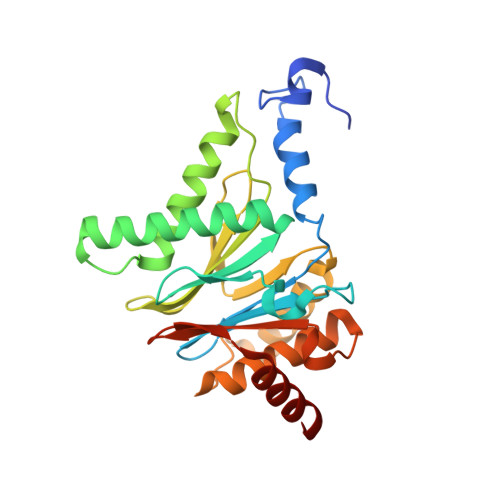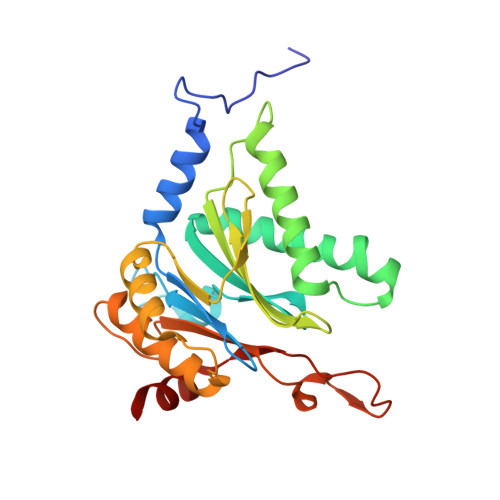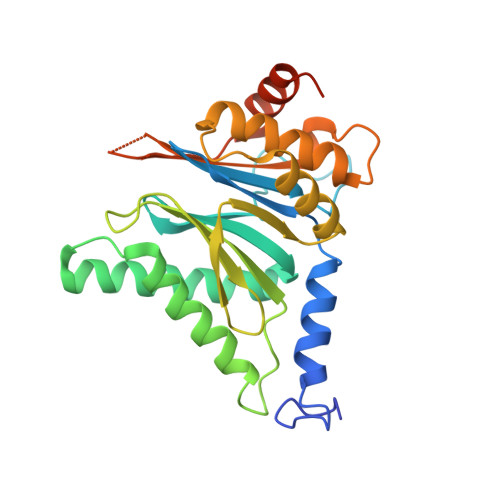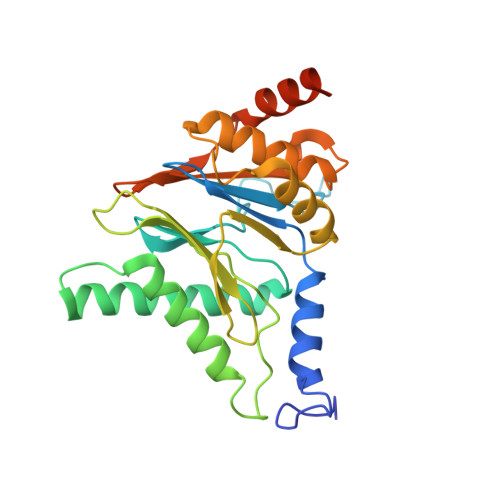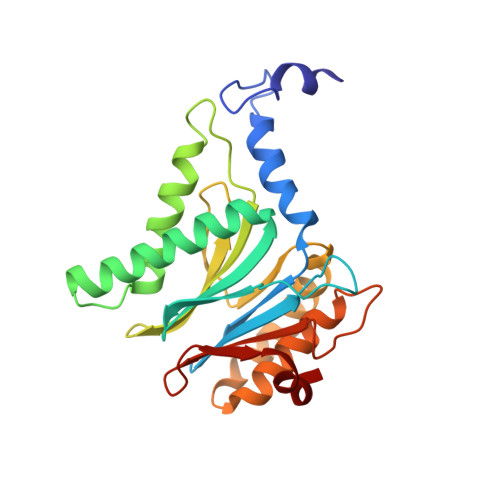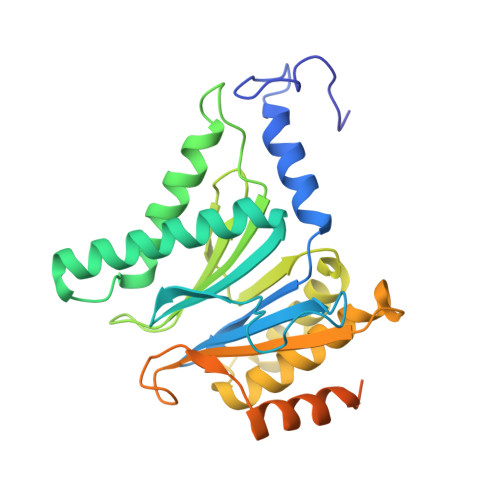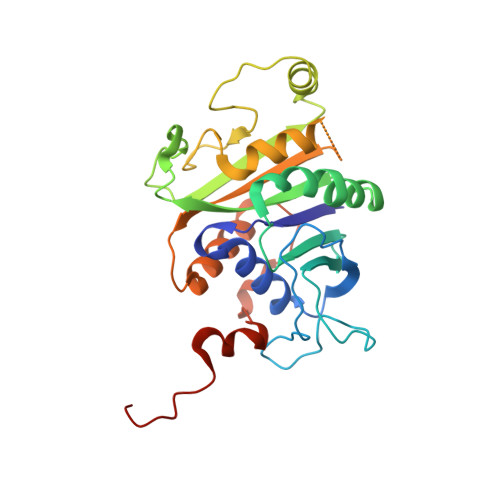Structures of chaperone-associated assembly intermediates reveal coordinated mechanisms of proteasome biogenesis.
Schnell, H.M., Walsh Jr., R.M., Rawson, S., Kaur, M., Bhanu, M.K., Tian, G., Prado, M.A., Guerra-Moreno, A., Paulo, J.A., Gygi, S.P., Roelofs, J., Finley, D., Hanna, J.(2021) Nat Struct Mol Biol 28: 418-425
- PubMed: 33846632
- DOI: https://doi.org/10.1038/s41594-021-00583-9
- Primary Citation of Related Structures:
7LS5, 7LS6, 7LSX - PubMed Abstract:
The proteasome mediates most selective protein degradation. Proteolysis occurs within the 20S core particle (CP), a barrel-shaped chamber with an α 7 β 7 β 7 α 7 configuration. CP biogenesis proceeds through an ordered multistep pathway requiring five chaperones, Pba1-4 and Ump1. Using Saccharomyces cerevisiae, we report high-resolution structures of CP assembly intermediates by cryogenic-electron microscopy. The first structure corresponds to the 13S particle, which consists of a complete α-ring, partial β-ring (β2-4), Ump1 and Pba1/2. The second structure contains two additional subunits (β5-6) and represents a later pre-15S intermediate. These structures reveal the architecture and positions of Ump1 and β2/β5 propeptides, with important implications for their functions. Unexpectedly, Pba1's N terminus extends through an open CP pore, accessing the CP interior to contact Ump1 and the β5 propeptide. These results reveal how the coordinated activity of Ump1, Pba1 and the active site propeptides orchestrate key aspects of CP assembly.
Organizational Affiliation:
Department of Pathology, Harvard Medical School and Brigham and Women's Hospital, Boston, MA, USA.








